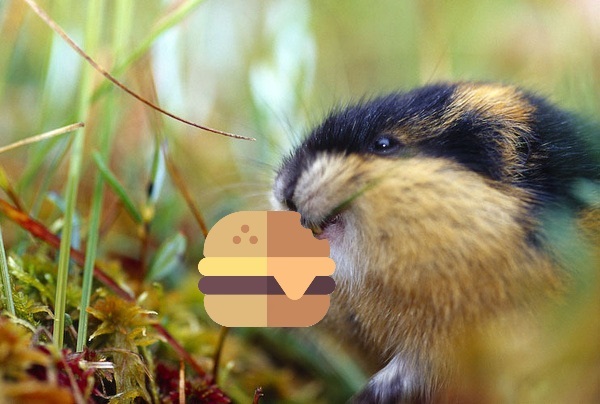I was on stable diffusion art and one of my comments got removed for saying the OP didn’t “make” the AI generated art. But he didn’t make shit the AI made it, he typed in a description and hit enter. I think we need a new word for when someone shared art an AI made, like they generated it or something. It feels insulting to actual artists to say you made art with AI


This seems like a good place for discussion so if you’ll humor me, I’d like to explain some things you might find in a prompt, maybe some things you weren’t aware you could do. Web services don’t allow for a lot of freedom to keep users from generating things outside their terms of use, but with open source tools you can get a lot more involved.
Take a look at these generation parameters:
sarasf, 1girl, solo, robe, long sleeves, white footwear, smile, wide sleeves, closed mouth, blush, looking at viewer, sitting, tree stump, forest, tree, sky, traditional media, 1990s \(style\), <lora:sarasf_V2-10:0.7>Negative prompt: (worst quality, low quality:1.4), FastNegativeV2Steps: 21, VAE: kl-f8-anime2.ckpt, Size: 512x768, Seed: 2303584416, Model: Based64mix-V3-Pruned, Version: v1.6.0, Sampler: DPM++ 2M Karras, VAE hash: df3c506e51, CFG scale: 6, Clip skip: 2, Model hash: 98a1428d4c, Hires steps: 16, "sarasf_V2-10: 1ca692d73fb1", Hires upscale: 2, Hires upscaler: 4x_foolhardy_Remacri, "FastNegativeV2: a7465e7cc2a2",ADetailer model: face_yolov8n.pt, ADetailer version: 23.11.1, Denoising strength: 0.38, ADetailer mask blur: 4, ADetailer model 2nd: Eyes.pt, ADetailer confidence: 0.3, ADetailer dilate erode: 4, ADetailer mask blur 2nd: 4, ADetailer confidence 2nd: 0.3, ADetailer inpaint padding: 32, ADetailer dilate erode 2nd: 4, ADetailer denoising strength: 0.42, ADetailer inpaint only masked: True, ADetailer inpaint padding 2nd: 32, ADetailer denoising strength 2nd: 0.43, ADetailer inpaint only masked 2nd: TrueTo break down a bit of what’s going on here, I’d like to explain some of the elements found here.
sarasfis the token for the LoRA of the character in this image, and<lora:sarasf_V2-10:0.7>is the character LoRA for Sarah from Shining Force II. LoRA are like supplementary models you use on top of a base model to capture a style or concept, like a patch. Some LoRA don’t have activation tokens, and some with them can be used without their token to get different results.The 0.7 in
<lora:sarasf_V2-10:0.7>refers to the strength at which the weights from the LoRA are applied to the output. Lowering the number causes the concept to manifest weaker in the output. You can blend styles and concepts this way with just the base model or multiple LoRA at the same time at different strengths. You can even take a monochrome LoRA and take the weight into the negative to get some crazy colors.The Negative Prompt is where you include things you don’t want in your image.
(worst quality, low quality:1.4),here have their attention set to 1.4, attention is sort of like weight, but for tokens. LoRA bring their own weights to add onto the model, whereas attention on tokens works completely inside the weights they’re given. In this negative promptFastNegativeV2is an embedding known as a Textual Inversion. It’s sort of like a crystallized collection of tokens that tell the model something precise you want without having to enter the tokens yourself or mess around with the attention manually. Embeddings you put in the negative prompt are known as Negative Embeddings.In the next part,
Stepsstands for how many steps you want the model to take to solve the starting noise into an image. More steps take longer.VAEis the name of the Variational Autoencoder used in this generation. The VAE is responsible for working with the weights to make each image unique. A mismatch of VAE and model can yield blurry and desaturated images, so some models opt to have their VAE baked in,Sizeare the dimensions in pixels the image will be generated at.Seedis the number representation of the starting noise for the image. You need this to be able to reproduce a specific image.Modelis the name of the model used, andSampleris the name of the algorithm that solves the noise into an image. There are a few different samplers, also known as schedulers, each with their own trade-offs for speed, quality, and memory usage.CFGis basically how close you want the model to follow your prompt. Some models can’t handle high CFG values and flip out, giving over-exposed or nonsense output.Hires stepsrepresents the amount of steps you want to take on the second pass to upscale the output. This is necessary to get higher resolution images without visual artifacts.Hires upscaleris the name of the model that was used during the upscaling step, and again there are a ton of those with their own trade-offs and use cases.After
ADetailerare the parameters for Adetailer, an extension that does a post-process pass to fix things like broken anatomy, faces, and hands. We’ll just leave it at that because I don’t feel like explaining all the different settings found there.I could continue if you want to hear more.
Thanks for this comment, this actually made me want to play with one where I had kind of just waved it off before. Any recommendations for one that is very light weight and can be used offline. Wait times are fine but those configurations I’m sure I’ll need to find a reference manual for.
Swarm UI is pretty beginner-friendly. This tutorial will get you started.
Thanks